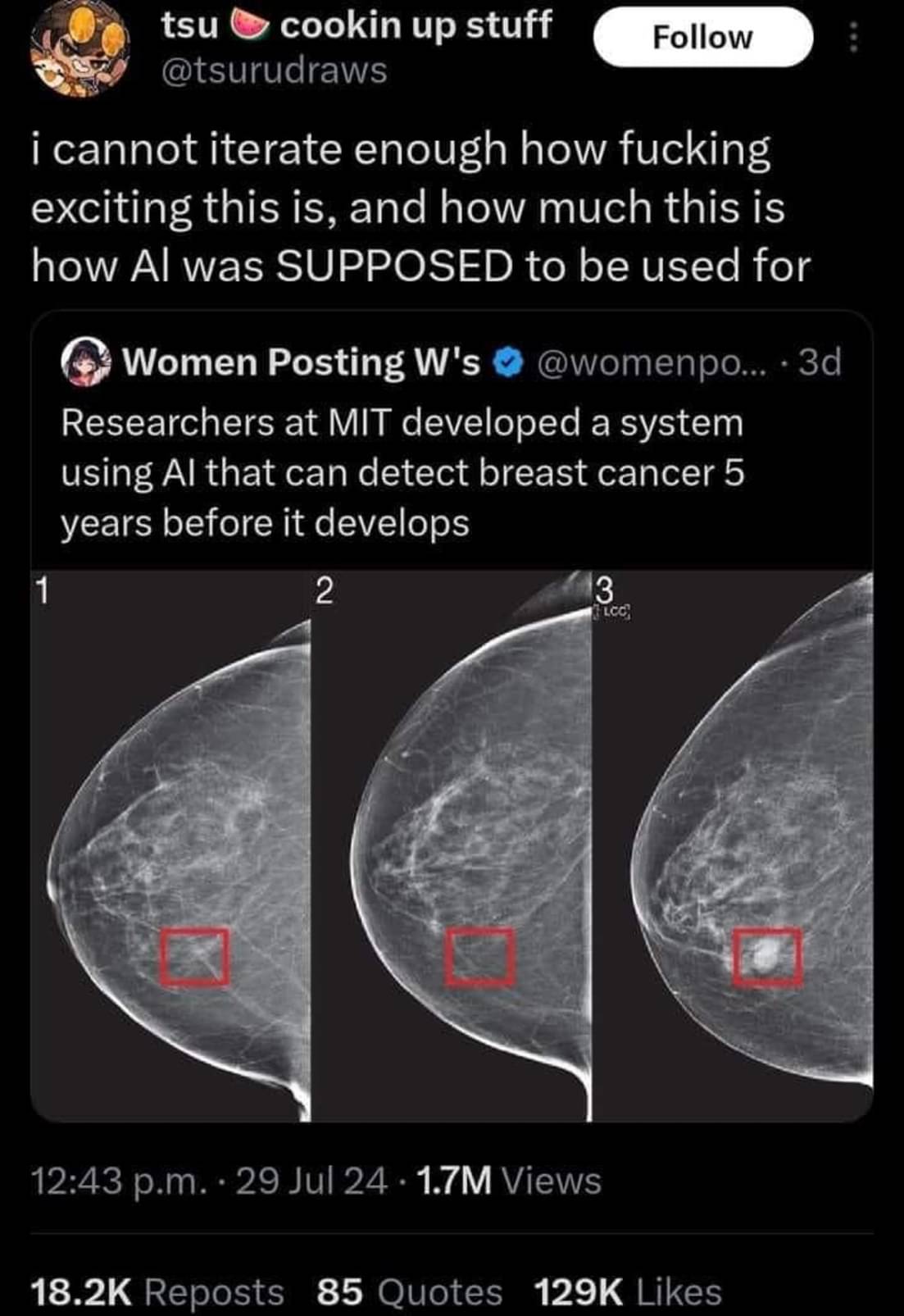this post was submitted on 02 Aug 2024
1455 points (98.3% liked)
Science Memes
10271 readers
2803 users here now
Welcome to c/science_memes @ Mander.xyz!
A place for majestic STEMLORD peacocking, as well as memes about the realities of working in a lab.

Rules
- Don't throw mud. Behave like an intellectual and remember the human.
- Keep it rooted (on topic).
- No spam.
- Infographics welcome, get schooled.
Research Committee
Other Mander Communities
Science and Research
Biology and Life Sciences
- !abiogenesis@mander.xyz
- !animal-behavior@mander.xyz
- !anthropology@mander.xyz
- !arachnology@mander.xyz
- !balconygardening@slrpnk.net
- !biodiversity@mander.xyz
- !biology@mander.xyz
- !biophysics@mander.xyz
- !botany@mander.xyz
- !ecology@mander.xyz
- !entomology@mander.xyz
- !fermentation@mander.xyz
- !herpetology@mander.xyz
- !houseplants@mander.xyz
- !medicine@mander.xyz
- !microscopy@mander.xyz
- !mycology@mander.xyz
- !nudibranchs@mander.xyz
- !nutrition@mander.xyz
- !palaeoecology@mander.xyz
- !palaeontology@mander.xyz
- !photosynthesis@mander.xyz
- !plantid@mander.xyz
- !plants@mander.xyz
- !reptiles and amphibians@mander.xyz
Physical Sciences
- !astronomy@mander.xyz
- !chemistry@mander.xyz
- !earthscience@mander.xyz
- !geography@mander.xyz
- !geospatial@mander.xyz
- !nuclear@mander.xyz
- !physics@mander.xyz
- !quantum-computing@mander.xyz
- !spectroscopy@mander.xyz
Humanities and Social Sciences
Practical and Applied Sciences
- !exercise-and sports-science@mander.xyz
- !gardening@mander.xyz
- !self sufficiency@mander.xyz
- !soilscience@slrpnk.net
- !terrariums@mander.xyz
- !timelapse@mander.xyz
Memes
Miscellaneous
founded 2 years ago
MODERATORS
you are viewing a single comment's thread
view the rest of the comments
view the rest of the comments

Using AI for anomaly detection is nothing new though. Haven't read any article about this specific 'discovery' but usually this uses a completely different technique than the AI that comes to mind when people think of AI these days.
From the conclusion of the actual paper:
If I read this paper correctly, the novelty is in the model, which is a deep learning model that works on mammogram images + traditional risk factors.
The only "innovation" here is feeding full view mammograms to a ResNet18(2016 model). The traditional risk factors regression is nothing special (barely machine learning). They don't go in depth about how they combine the two for the hybrid model, ~~so it's probably safe to assume it is something simple (merely combining the results, so nothing special in the training step).~~ edit: I stand corrected, commenter below pointed out the appendix, and the regression does in fact come into play in the training step
As a different commenter mentioned, the data collection is largely the interesting part here.
I'll admit I was wrong about my first guess as to the network topology used though, I was thinking they used something like auto encoders (but that is mostly used in cases where examples of bad samples are rare)
ResNet18 is ancient and tiny…I don’t understand why they didn’t go with a deeper network. ResNet50 is usually the smallest I’ll use.